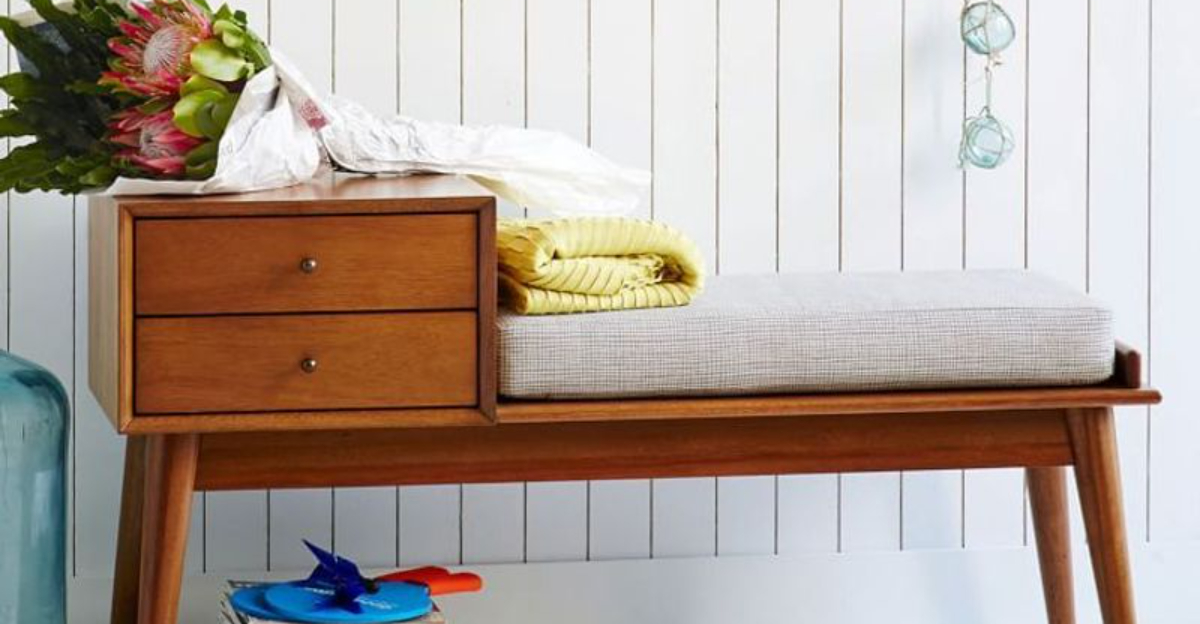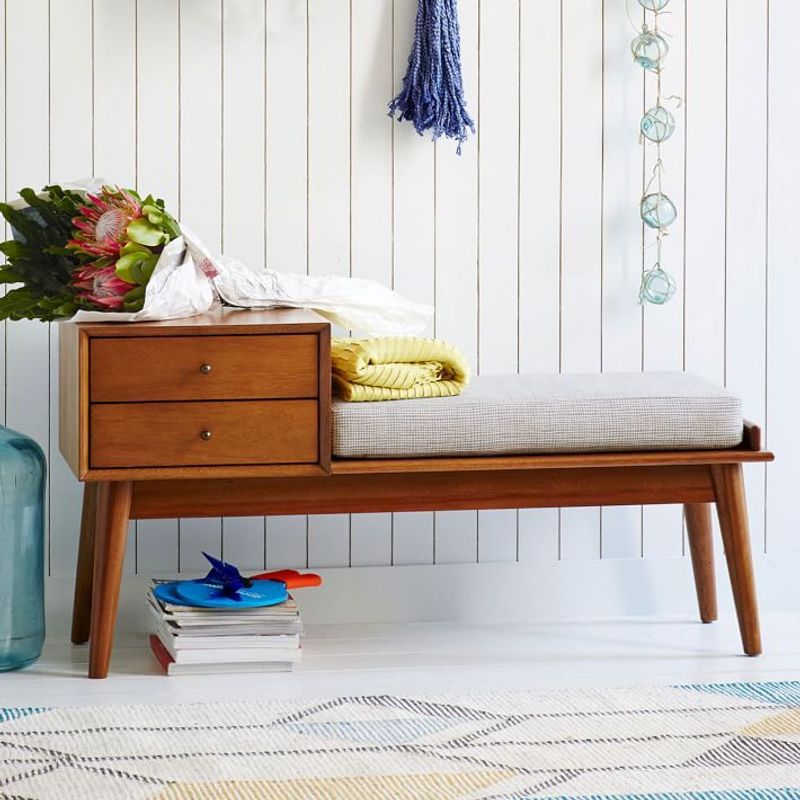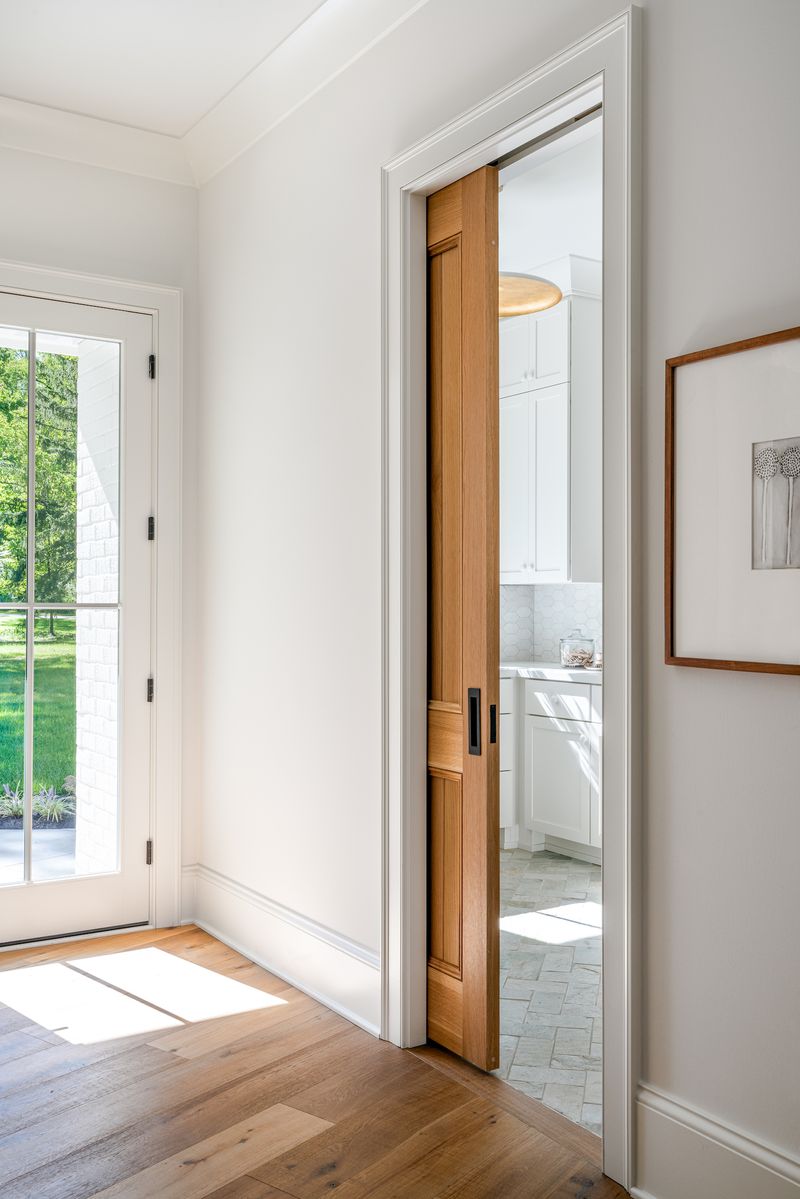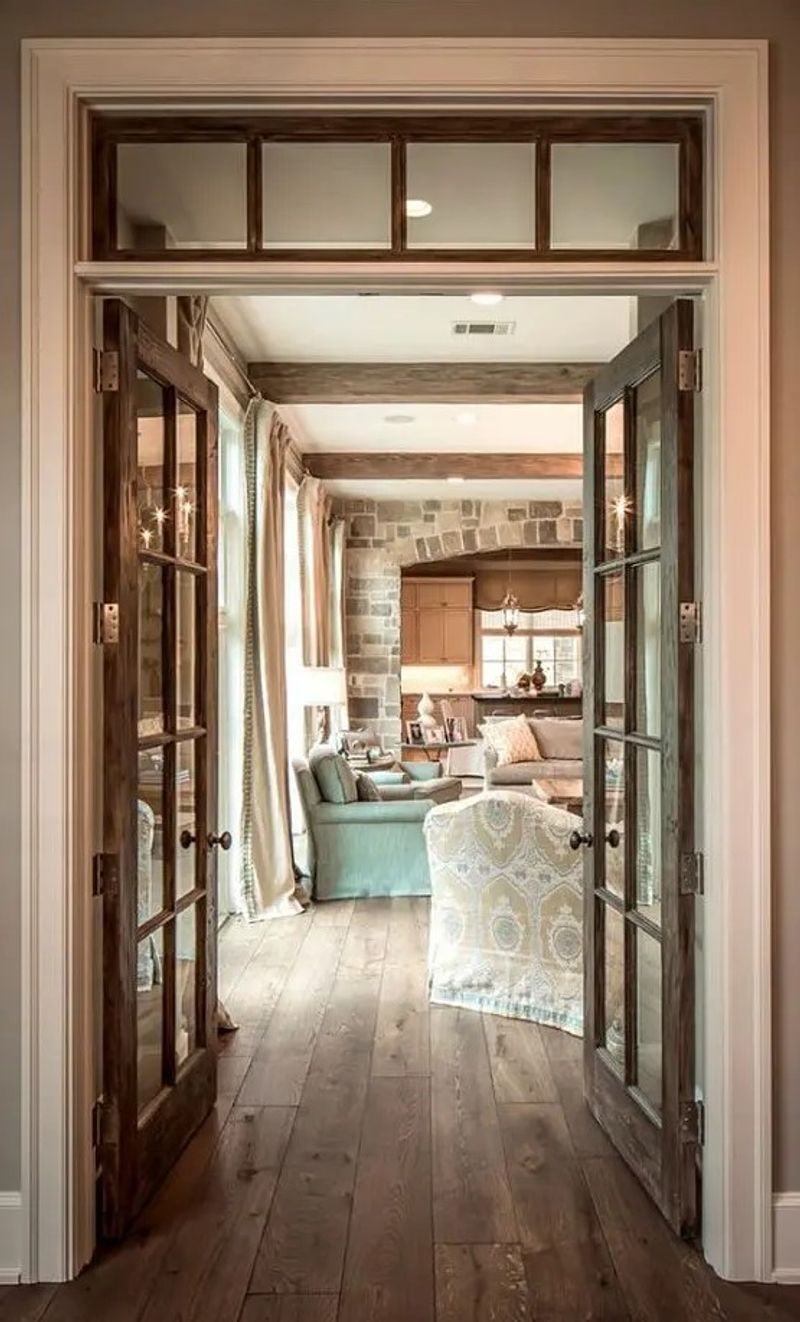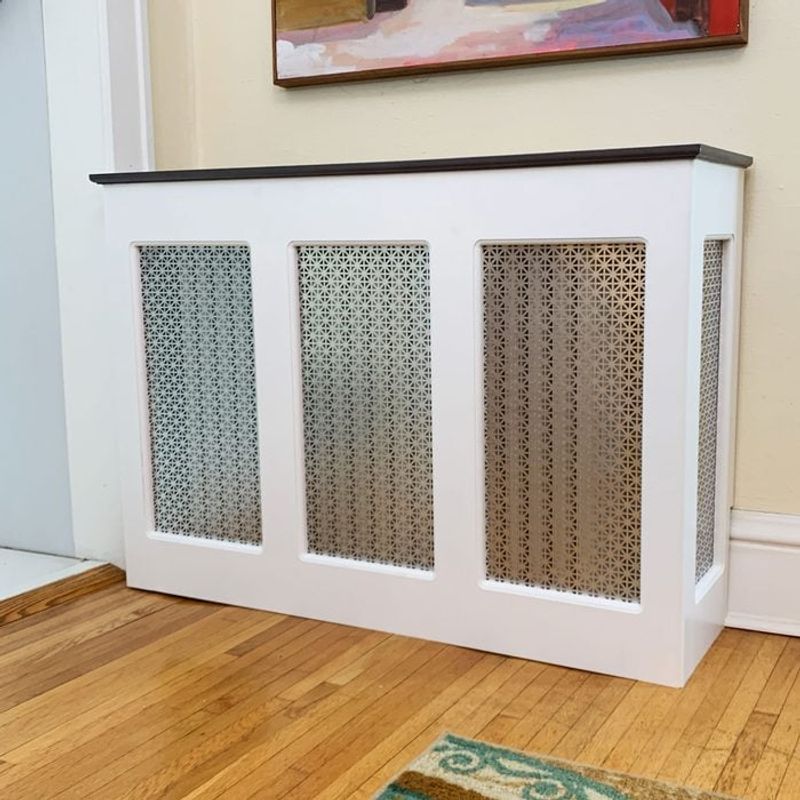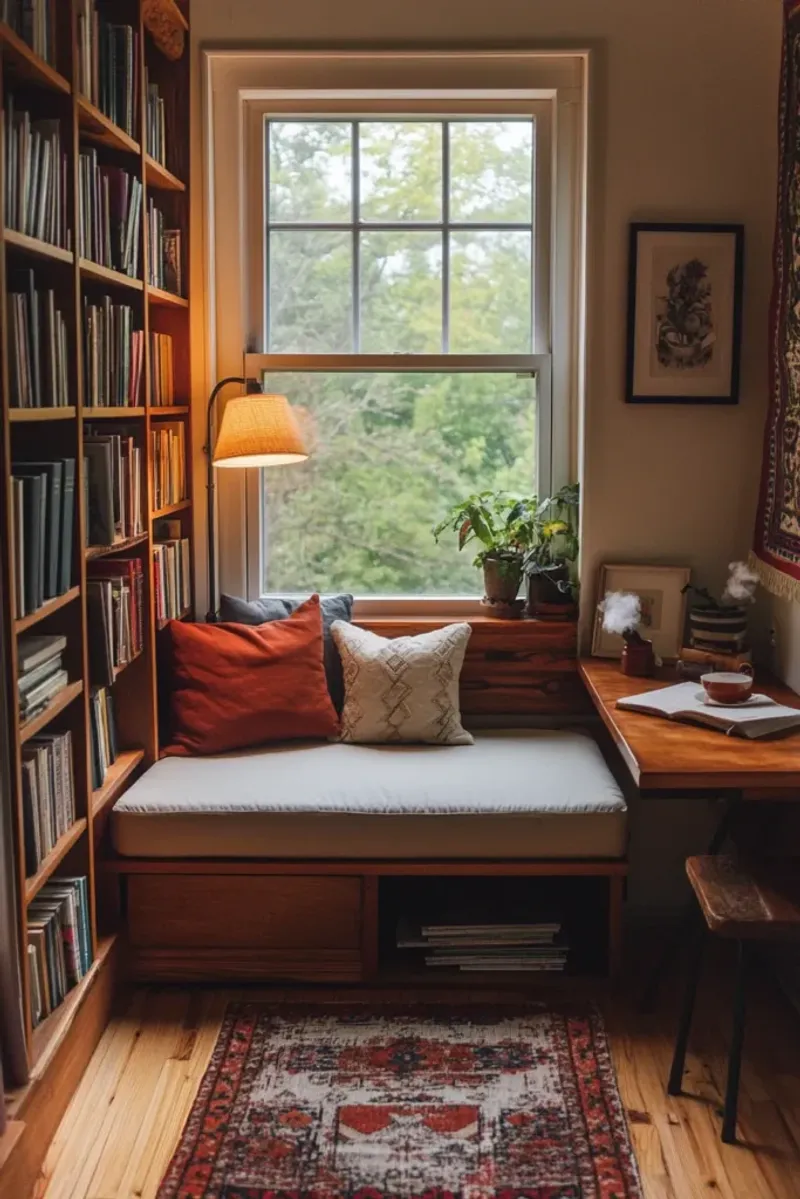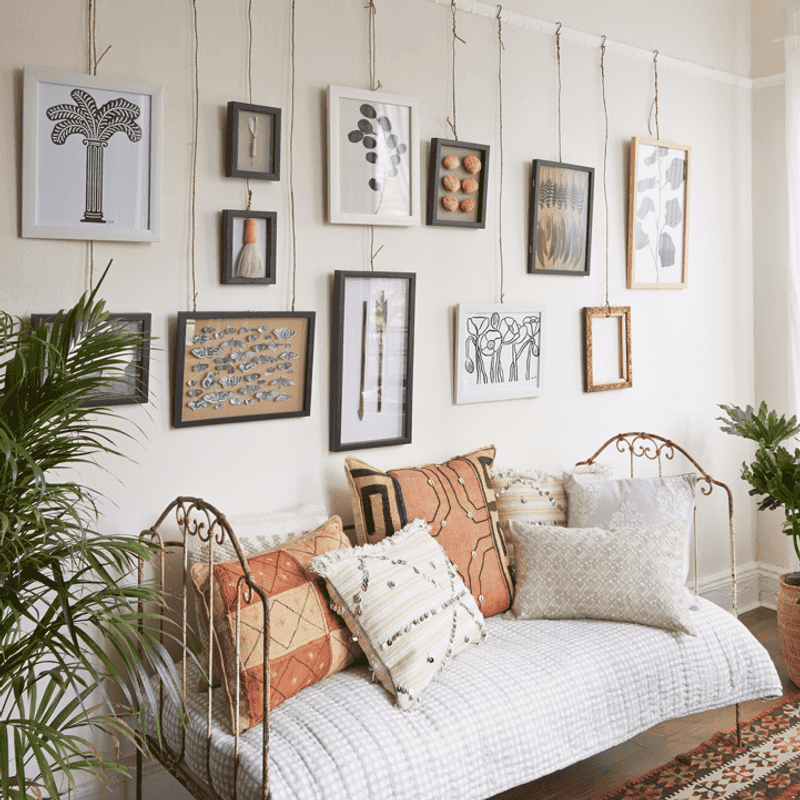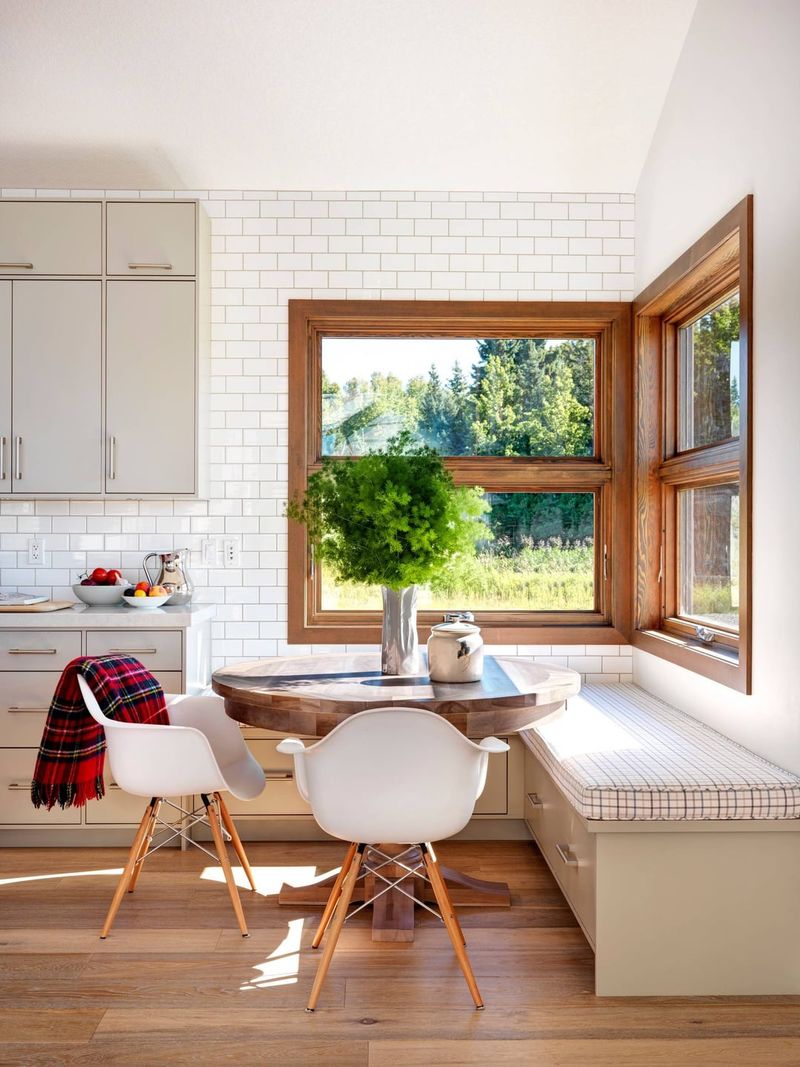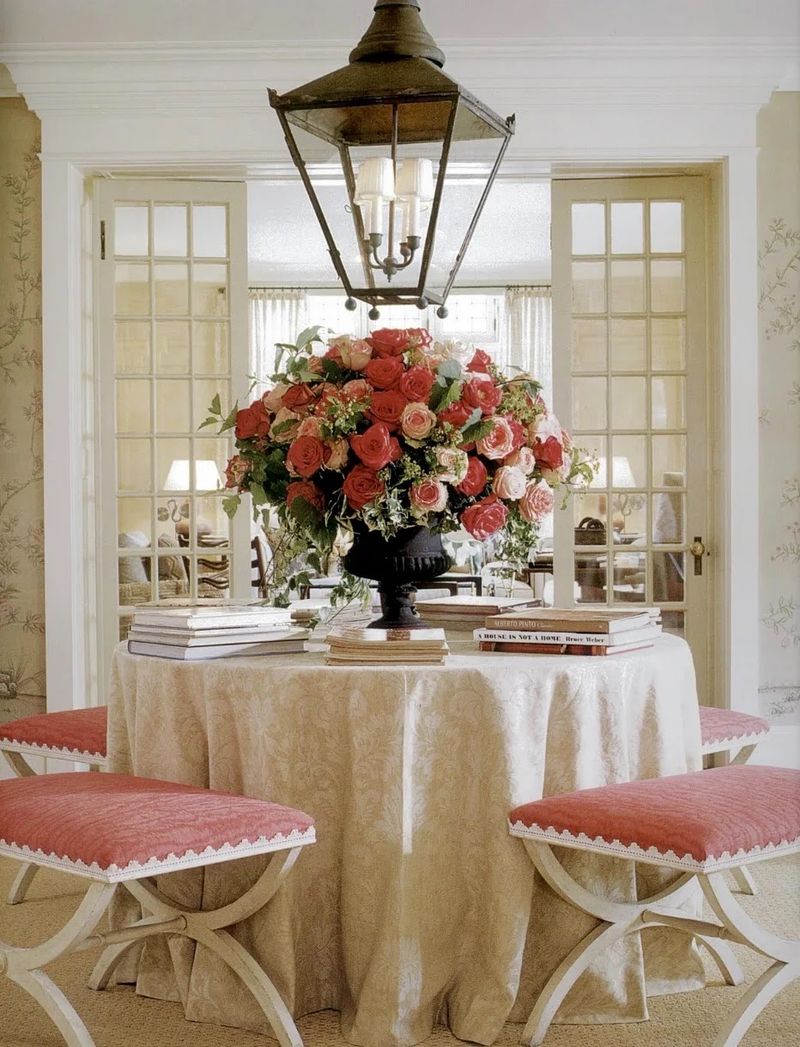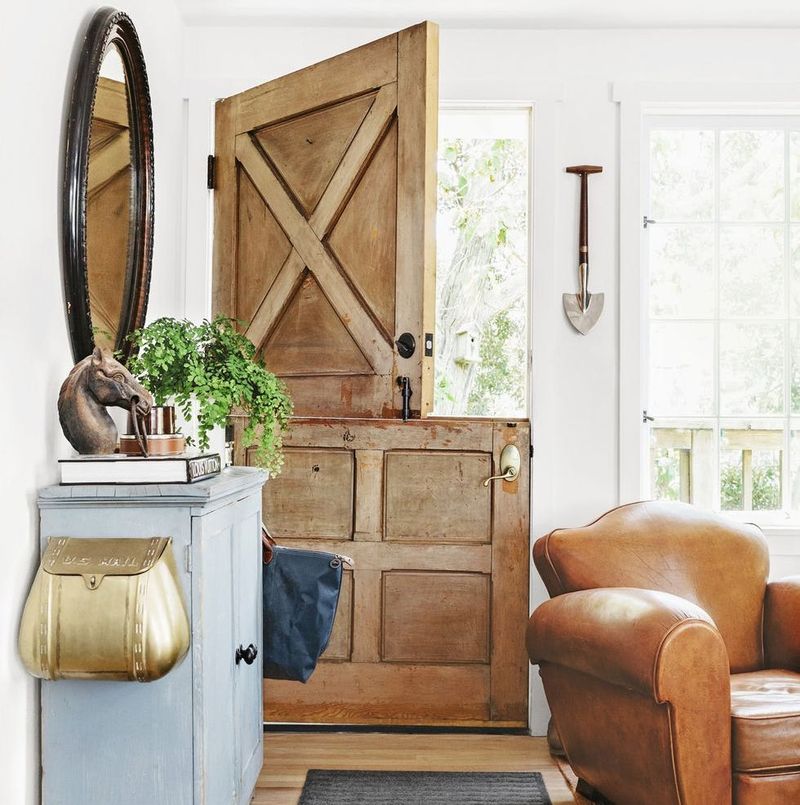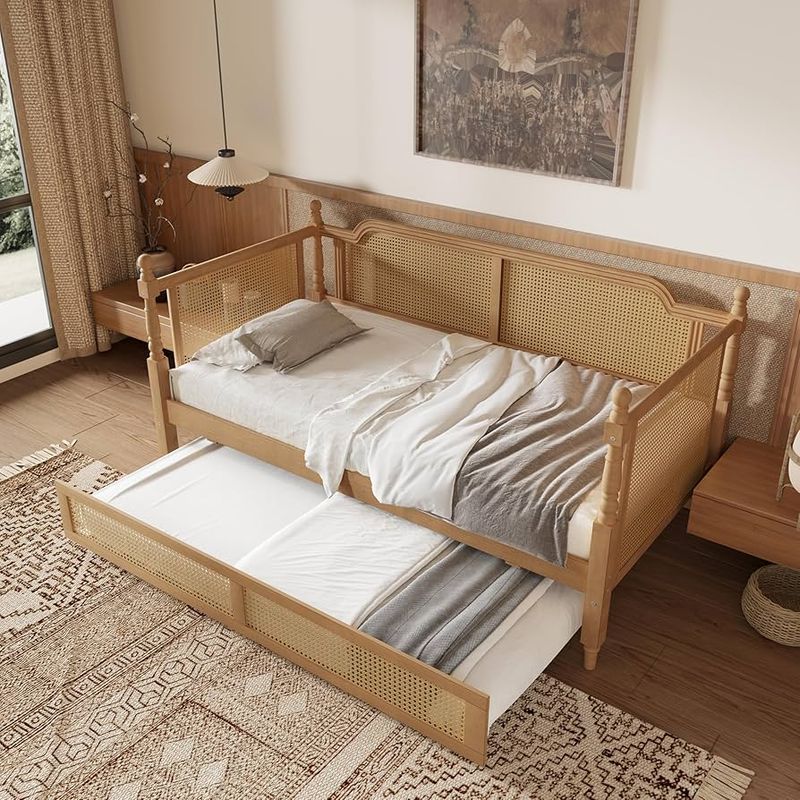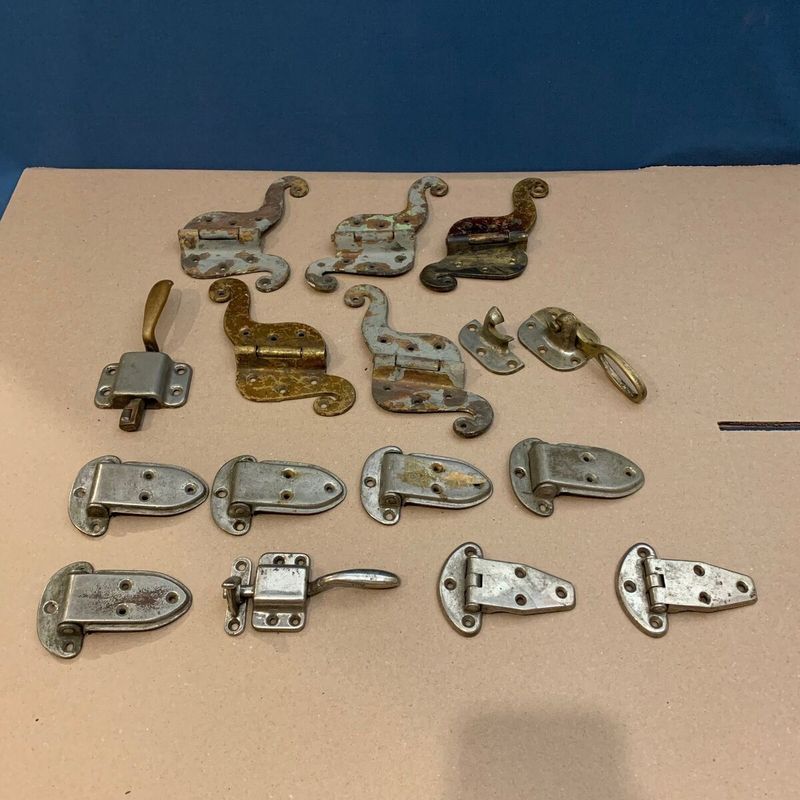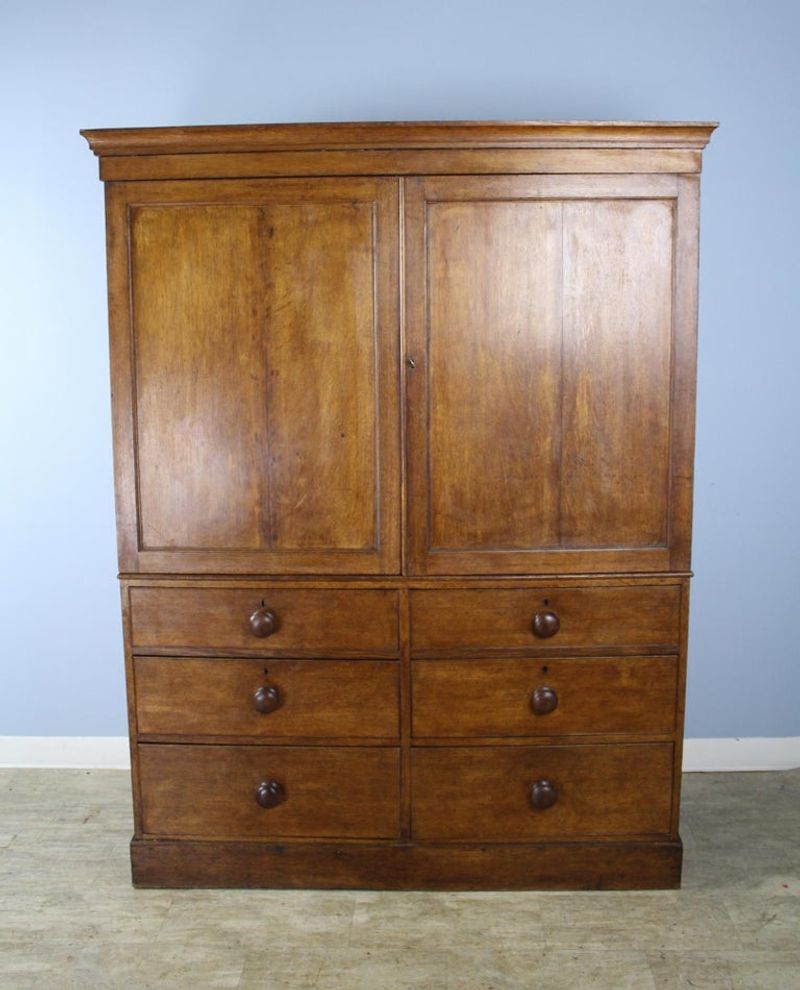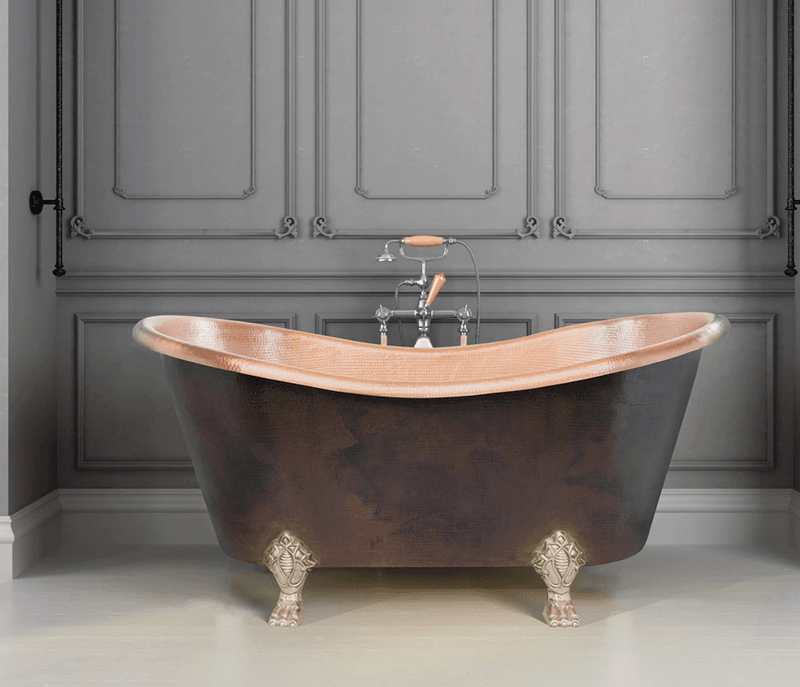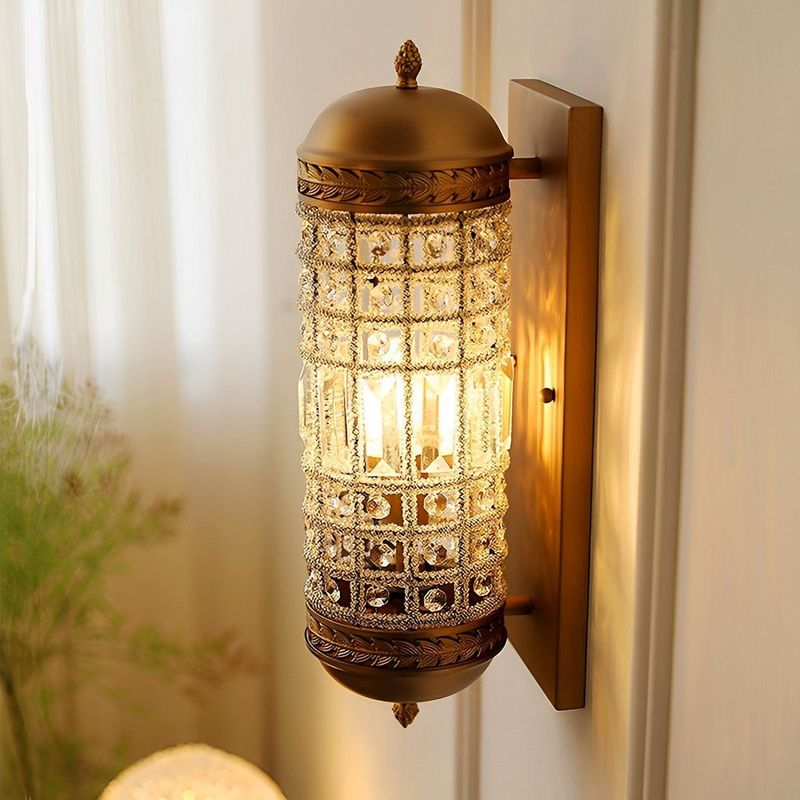Remember when homes had character that couldn’t be replicated with a quick trip to a big box store?
Interior designers are increasingly looking to the past for inspiration, lamenting the loss of certain vintage treasures that added soul to our spaces. From architectural details to furniture pieces with stories to tell, these items brought warmth and personality that today’s mass-produced alternatives often lack.
It’s time to explore the vintage gems that design experts wish would make a triumphant comeback very soon.
1. Telephone Tables
Long before smartphones kept us constantly connected, homes featured dedicated furniture for the art of conversation. Telephone tables combined seating, writing surface, and phone storage in one elegant solution – the original communication station.
With their thoughtful design, these compact pieces offered a small bench or chair alongside a surface for message-taking and a shelf below for directories. Some even featured little drawers for stationery and pens.
Interior designers point to these charming pieces as perfect examples of purpose-built furniture that solved problems beautifully. Their return could offer modern homes a designated space for devices that need charging while encouraging us to sit properly during calls.
2. Butler’s Pantries
Tucked between dining rooms and kitchens, these specialized transition spaces were once the secret to flawless entertaining. Butler’s pantries served as staging areas where final meal preparations happened away from guests’ eyes, maintaining the illusion of effortless hospitality.
With built-in storage for fine china, silver, and linens, these rooms kept precious items accessible yet protected. Their countertops provided perfect landing zones for platters before serving and dirty dishes after meals.
According to designers, modern homes sacrifice functionality by eliminating these buffer zones. The revival of butler’s pantries would offer practical solutions for today’s entertaining challenges while creating valuable storage in an era of open-concept living.
3. Pocket Doors
Sliding silently into wall cavities, pocket doors once offered the perfect compromise between open flow and privacy. Unlike their swinging counterparts that require clearance space, these ingenious solutions disappeared when not needed, maximizing usable square footage.
Ornate Victorian versions featured intricate glass panels and carved details, while mid-century interpretations embraced sleek simplicity. Either way, they solved spatial problems with elegance that modern homes often lack.
Designers regularly cite pocket doors as missed opportunities in contemporary architecture. Their space-saving functionality would be particularly valuable in today’s smaller homes, where every inch counts and flexibility between public and private zones becomes increasingly important.
4. Conversation Pits
Whatever happened to those sunken living room spaces that practically begged people to gather and chat? Conversation pits were the epitome of 1960s and 70s social architecture, creating natural gathering spots without the distraction of screens.
Surrounded by built-in seating that embraced guests from all sides, these cozy nooks fostered connection in ways our current furniture arrangements often fail to achieve. The sunken design created instant intimacy while defining space without walls.
Many architects and designers lament their disappearance, noting how perfectly they solved the eternal problem of creating natural flow and encouraging actual face-to-face interaction in our increasingly digital world.
5. Transom Windows
Perched above doorways, these architectural gems once served multiple practical functions while adding visual interest to interior spaces. Transom windows allowed air circulation between rooms even when doors were closed – natural ventilation before air conditioning existed.
Their elevated position maintained privacy while permitting natural light to flow through interior spaces. Many featured stained or textured glass that cast colorful patterns across rooms as sunlight shifted throughout the day.
Today’s designers appreciate how these windows added architectural character while solving practical problems. Their revival would bring back thoughtful details that modern construction often overlooks, creating layered interest in doorways while potentially improving cross-ventilation in eco-conscious homes.
6. Secretary Desks
Folding down to reveal organized compartments and a writing surface, secretary desks brilliantly concealed work spaces when not in use. These versatile pieces allowed homes to maintain formal appearances while accommodating practical needs for correspondence and record-keeping.
With their clever cubbies, tiny drawers, and hidden compartments, secretaries invited organization in an analog world. When closed, they transformed into handsome cabinets or bookshelves that blended seamlessly with living space décor.
Many designers advocate for their return in our work-from-home era. Unlike dedicated home offices that consume entire rooms, these elegant solutions would allow living spaces to serve multiple functions without permanent visual clutter from technology and paperwork.
7. Rotary Telephones
Imagine the satisfying click-clack as you dial each number, the gentle resistance against your finger creating a small ritual of communication. Rotary phones weren’t just functional – they were statement pieces that commanded attention in any room.
Unlike today’s disposable tech, these sturdy beauties were built to last decades, often becoming family heirlooms. Their solid construction and deliberate use created moments of mindfulness before we had a name for it.
Modern designers appreciate how these vintage communications devices balanced form and function while adding character to entryways and side tables with their sculptural qualities and authentic materials.
8. Radiator Covers
Transforming utilitarian heating elements into furniture-like features, radiator covers were once masterclasses in problem-solving design. Crafted from wood with metal or decorative grill inserts, these enclosures concealed industrial-looking radiators while actually enhancing their function.
The flat tops created bonus display surfaces for plants, books, or decorative objects. Meanwhile, the covers’ design allowed heat to circulate efficiently while protecting household members from accidental burns on hot surfaces.
Design professionals point to these practical pieces as examples of how previous generations refused to sacrifice aesthetics for function. Their comeback would offer similar solutions for modern heating systems, proving that mechanical necessities don’t have to detract from carefully curated interiors.
9. Dumbwaiters
Hidden in walls between floors, these mini elevators for objects made multi-level living remarkably convenient long before modern amenities. Dumbwaiters transported everything from firewood to fresh laundry, sparing household members countless trips up and down stairs.
Originally operated by simple rope-and-pulley systems, these ingenious solutions made home maintenance significantly easier. Their compact design utilized vertical space efficiently while remaining nearly invisible when not in use.
Forward-thinking designers suggest that modern homes – especially those with aging-in-place considerations – could benefit tremendously from their reintroduction. Updated with contemporary safety features, dumbwaiters could once again provide practical solutions for moving items between floors without physical strain.
10. Reading Nooks
Carved from otherwise unusable spaces, dedicated reading nooks once celebrated the simple pleasure of losing yourself in a good book. Window seats with built-in storage below, alcoves with just enough room for a chair, or corners transformed with shelving created intentional retreats within busy households.
These thoughtfully designed spaces acknowledged the importance of quiet contemplation and solo activities. Their typically modest footprint made efficient use of architectural oddities like dormers or stair landings.
Many interior designers bemoan how modern homes prioritize open concept layouts at the expense of these intimate, purpose-built spaces. Their return would recognize our psychological need for occasional retreat while making use of transitional spaces that often go underutilized.
11. Picture Rails
Running horizontally near ceilings, these narrow moldings once allowed art displays to evolve without damaging plaster walls. Picture rails worked with special hanging hardware to create flexible gallery systems that accommodated changing tastes and collections.
Homes equipped with these clever features could refresh their décor seasonally or rearrange art without patching holes or repainting. The rails themselves added architectural interest while serving a genuinely practical purpose.
Design professionals appreciate how these simple additions respected both the integrity of walls and the evolving nature of personal expression. Their comeback would be particularly welcome in rental properties and historic homes, where wall preservation matters while still allowing for personalization.
12. Breakfast Nooks
Tucked into kitchen corners with built-in benches hugging tables, breakfast nooks created casual dining areas that fostered morning conversations and quick meals. Their efficient design typically featured L-shaped or U-shaped seating that maximized capacity while minimizing spatial requirements.
With storage often built beneath the benches, these cozy spots combined practicality with comfort. High backs provided draft protection while creating visual coziness that invited lingering over coffee.
Designers note that despite our renewed interest in kitchen gathering spaces, modern interpretations often lack the intimate scale and thoughtful integration of these vintage predecessors. A true revival would recapture their space-saving ingenuity while updating materials for contemporary lifestyles.
13. Chaise Lounges
Designed for leisurely repose without fully reclining, chaise lounges once graced bedrooms and sitting rooms as invitations to comfortable contemplation. Their asymmetrical form supported semi-reclined positions perfect for reading, conversation, or afternoon naps.
Unlike today’s oversized recliners, these elegant pieces maintained a certain sophistication while prioritizing comfort. Their relatively compact footprints made them suitable for spaces where full sofas would overwhelm.
Interior designers frequently mention traditional chaises as perfect solutions for awkward corners or bedroom sitting areas. Their return would acknowledge our need for comfortable relaxation options beyond beds and sofas, particularly in homes where multiple activities occur in shared spaces.
14. Skirted Tables
Draped in fabric that reached the floor, skirted tables cleverly concealed storage while adding softness to rooms dominated by hard surfaces. These versatile pieces transformed ordinary tables into elegant design elements while hiding everything from holiday decorations to extra linens.
The flowing textiles introduced pattern, color, and texture in ways that furniture alone couldn’t achieve. Seasonal changes were as simple as swapping table skirts, allowing rooms to evolve without replacing major pieces.
Design experts note that these practical solutions addressed storage concerns while contributing to rooms’ acoustic quality by absorbing sound. Their revival would offer similar benefits to contemporary homes where storage remains precious and the balance between hard and soft elements creates visual harmony.
15. Dutch Doors
Split horizontally to operate as two independent sections, Dutch doors offered brilliant flexibility between connection and separation. The bottom half could remain closed to contain children or pets while the open top permitted conversation, fresh air, and visual connection.
Originally developed for practical farmhouse living, these ingenious entryways later found homes in various architectural styles. Their clever design solved everyday problems while adding distinctive character to doorways.
Architects and designers frequently reference Dutch doors as examples of how thoughtful design can address multiple needs simultaneously. Their return would be particularly valuable for modern homes seeking flexible boundaries between indoor and outdoor spaces or between areas with different functions within open floor plans.
16. Daybeds
Serving triple duty as seating, sleeping space, and room divider, daybeds were once essential pieces in homes where rooms needed to serve multiple functions. Their versatile design allowed them to sit flush against walls or float in rooms as boundaries between distinct areas.
Unlike futons or sleeper sofas, traditional daybeds maintained their elegant appearance without complex mechanisms. Many featured trundle storage beneath that could accommodate additional guests or seasonal items.
Interior designers champion these adaptable pieces for today’s flexible living arrangements, particularly in urban apartments or multi-generational homes. Their comeback would acknowledge our continuing need for furniture that gracefully serves different purposes throughout the day and as our needs evolve.
17. Icebox Hardware
Long before modern refrigeration, iceboxes kept food fresh with blocks of ice – and their hardware was as beautiful as it was functional. Substantial latches, hinges, and handles crafted from brass or nickel added architectural interest while ensuring proper sealing.
When electric refrigerators replaced these earlier cooling systems, we lost the opportunity to incorporate these character-rich elements into kitchens. The substantial scale and careful detailing of icebox hardware contrasts sharply with today’s minimal plastic components.
Design professionals often point to these vintage elements as examples of how utilitarian items can also be beautiful. Incorporating similar hardware on modern cabinetry would bring back a level of craftsmanship and visual interest that mass-produced components rarely achieve.
18. Linen Presses
Standing tall in bedrooms and hallways, linen presses once stored household textiles with a grandeur that modern closets rarely achieve. These substantial pieces featured multiple shelves behind generous doors, often with drawers below for smaller items.
Unlike built-in storage that disappears into walls, these handsome cabinets contributed to rooms’ architecture while keeping linens properly aired. Many incorporated ventilation features to prevent mustiness while protecting precious textiles from light damage.
Designers appreciate how these pieces elevated everyday storage to statement furniture. Their return would acknowledge that some items deserve more ceremonious housing than standard closets provide, while adding architectural presence to bedrooms and hallways that often lack distinctive furniture.
19. Clawfoot Tubs
Elevated on decorative feet resembling animal paws, clawfoot tubs combined luxury bathing with sculptural presence in bathrooms. Their deep, sloped designs embraced bathers in ways that modern built-in tubs rarely achieve, inviting lengthy, contemplative soaks.
Cast iron construction covered in porcelain retained heat exceptionally well, keeping water warmer longer than contemporary materials. The space beneath created visual lightness despite their substantial weight while facilitating cleaning.
Bathroom designers often cite these tubs as perfect examples of how fixtures can serve as focal points rather than merely functional necessities. Their renewed popularity acknowledges our desire for bathrooms that feel like retreats rather than simply utilitarian spaces.
20. Sconces
Before ceiling fixtures dominated lighting plans, wall-mounted sconces created layers of illumination that flattered both rooms and their occupants. These fixtures directed light outward or upward, eliminating harsh downward shadows while adding rhythmic architectural elements to walls.
Their placement at eye level meant they illuminated faces naturally during conversations, creating intimate atmospheres impossible to achieve with overhead lighting alone. Many featured adjustable arms or swivels that allowed light to be directed precisely where needed.
Lighting designers frequently advocate for their return, noting how they contribute to well-balanced lighting plans. Their revival would acknowledge that truly comfortable spaces require multiple light sources at different heights, creating depth and dimension beyond what can be achieved with ceiling fixtures alone.

